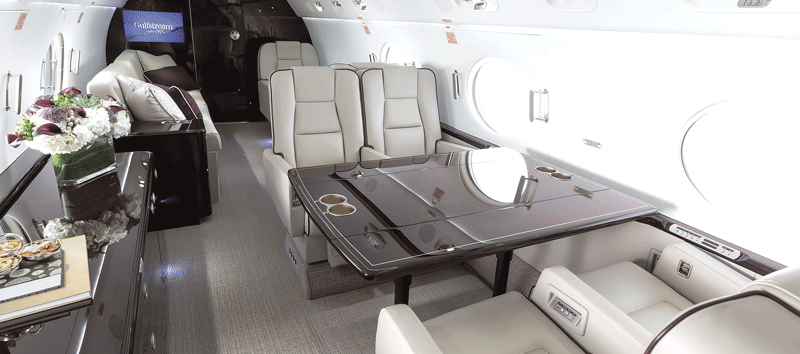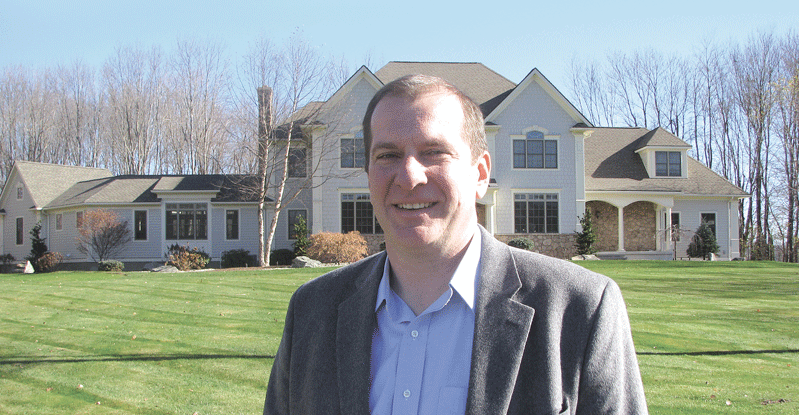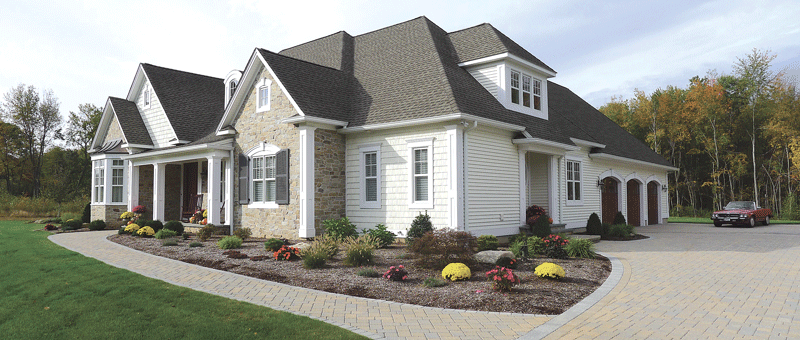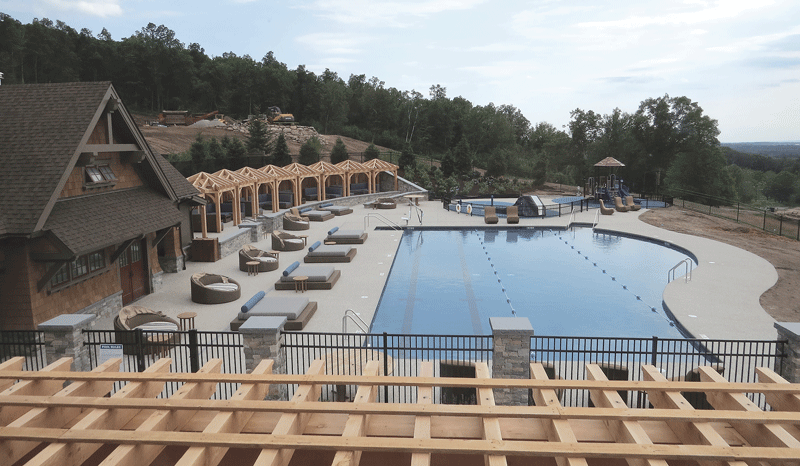Expectations Are Soaring

Kevin Bradley says business travel on Rectrix’s charter planes is increasing to and from Westfield Barnes Airport.
Westfield Barnes Airport is home to a number of businesses that provide a wide array of services, ranging from fixed-base operators, the equivalent of a commercial terminal for private planes, to general maintenance, antique restoration, retrofitting or upgrades to interiors, and avionics, which include communications, navigation, and other key systems. These companies are busy these days, as plane ownership is strong in the region — and not just among the rich.
Kevin Bradley calls them “time machines.”
He was referring to the private jets Rectrix has available for hire that are used by businesspeople to transport them to and from meetings in distant states.
Clients can drive their cars directly up to these well-outfitted aircraft that are stationed in general-aviation airports and board immediately, which saves the time it would take to park, check in, go through security, and suffer the delays that can occur at a commercial airport. Once passengers are airborne, they have access to technology, privacy, and comfort that allow them to continue their business dealings alone or in conjunction with the people they are traveling with, which can include satellite phone systems, wi-fi service, conference tables, and comfortable seating.
“If someone from Dallas needs to attend a meeting in Greenfield, they can charter a flight to Westfield Barnes Airport, find a rental car waiting for them on the ramp, and return home the same day,” said Bradley, vice president of operations for Rectrix Commercial Aviation Services Inc.
“If they flew commercially, they would probably have one or two connections and have to stay overnight,” he went on, adding that demand for the company’s services is high, and its target market is business travelers, although some people do charter jets to take them to vacation spots.
“These planes correlate to the Four Seasons — they are the Ritz Carlton of aviation in terms of luxury hospitality,” he told BusinessWest.
Rectrix, whose services in Westfield include a maintenance facility called AirFlyte, is one of three businesses at the 1,200-acre airport that provide a wide array of offerings that range from fixed-base operators (FBOs), which are the equivalent of a commercial terminal for private planes, to general maintenance, antique restoration, and retrofitting or upgrades to interiors, not to mention avionics, which include communications, navigation, and displays and management of multiple systems that aircraft need to function.
“People don’t realize how much general aviation occurs in Westfield,” Bradley explained. “Westfield Barnes Airport is a huge economic engine for the regional economy, and the businesses there have brought a tremendous infusion of money and skilled jobs to the area.”
Steve Cass agrees. “It’s a great location and a great place to work. We have approximately 250 people employed at our Westfield facility, and last year we serviced nearly 1,600 customers for both in-house and on-the-road events,” said the vice president of technical marketing and communications for Gulfstream Aerospace Corp.
Meanwhile, Tom Trudeau, who founded Aero Design Aircraft Services in 1984 at Barnes, says city officials and the Federal Aviation Administration are very supportive of the airport, which is rare because Westfield could make more revenue by selling the land to developers.
“But this airport is pretty solvent,” he told BusinessWest, explaining that his company has always done well and has never been affected by downturns in the economy. All of Aero Design’s business comes from word-of-mouth advertising and ranges from inspections and general maintenance on small private planes to antique restorations, which can take several years if it requires taking a plane completely apart and rebuilding it.

Tom Trudeau says Aero Design Aircraft Services is one of a few companies in New England that does restoration work on antique planes.
The company is one of a few in New England that does this type of restoration, and although this end of the business is limited to clients who can afford costly overhauls, Trudeau also caters to the lower end of the aviation business.
“Contrary to what most people think, flying is not necessarily a rich man’s activity. If you fly strictly for recreation, you can own a plane for less than the cost of a new car,” he said, adding the aircraft he works on range in price from $15,000 to about $3 million. About half his work is on planes used strictly for pleasure, while the remainder involves restoration on more expensive aircraft, which are often owned by businesses.
“But we’re so diverse,” he went on. “We update upholstery and do engine work and sheet metal repair — everything an airplane needs.”
For this edition and its focus on luxury living, BusinessWest takes a closer look at these companies that share space with the Massachusetts Air National Guard and Army National Guard at Westfield Barnes Airport, and how their work continues to take them to new heights.
Plane Speaking
Standards for maintaining aircraft are very strict, and all small planes must undergo annual inspections. Inspection times vary for larger aircraft, but a problem discovered on any plane must be repaired before it can be flown again.
Trudeau said most general-aviation planes in the air today are 15 to 20 years old, and, unlike automobiles, they increase in value as they age. For example, a four-person passenger plane that cost $20,000 in 1975 is worth double that today, and, if it’s in exceptional condition, the value is a lot higher.
As a result, Aero Design is often called upon to install new radios and instrumentation in addition to making upgrades to the interiors of aircraft, and the quality and scope of the company’s work on antique planes has been featured in a number of aviation magazines.
At present, the company is in the process of completely rebuilding a 1952 de Haviland Super Chipmunk, a process that has taken three years. “It probably cost $4,000 to $5,000 when it was new, but it’s worth $200,000 now because it’s so rare and has been modified and upgraded through the years,” Trudeau noted.
Although catering to this market is more lucrative than doing inspections and small repairs or upgrades, the company can do anything an airplane needs, Trudeau said. He has four to five employees and also works on the planes himself. The jobs the company undertakes are so diverse that it never lacks for business, especially since there is always a new generation of pilots purchasing small aircraft.
“Flying gets into your blood, and we have customers who don’t need their planes for business, but just enjoy going up in the air. We also service sport planes, aircraft used by businesses, and planes people have built themselves,” the pilot said, explaining that Aero Design’s clients range from a farmer to a dentist to people who have taken up flying in retirement.
Gulfstream caters to an entirely different market, and works almost exclusively on its own fleet, along with Falcon aircraft.

The interior layout of Gulfstream jets allows business travelers to work in a private, comfortable setting.
Cass said the Northeast has proven to be a very popular corridor for business travel due to financial districts in New York and the number of businesses in Boston, and 65% of its 2,500 planes are kept in the U.S.
In fact, business has been so good that, in 2013, Gulfstream built a new, 125,000-square-foot hangar in Westfield to accommodate not only its flagship G65OER jet, which costs $65 million, holds up to 16 passengers, and can travel non-stop from Boston to Beijing — a distance of about 7,500 nautical miles — but an influx of other models that routinely need service.
“The new hangar doubled the capacity of planes we can store there,” Cass told BusinessWest, adding that there was a real need for the structure due to the increase in business jet travel.
The company’s Westfield location is one of eight service centers in the U.S. and three overseas, in London, Brazil, and Beijing.
“As the fleet continues to grow, more investments are made in infrastructure,” Cass continued, adding that more than 50% of Gulfstream jets are owned by corporations, 30% are owned by individuals, and fewer than 10% are used by the government or built for special missions.
These jets are popular with Fortune 500 companies and other large firms because their cabins are quieter than commercial planes, the pressurization is better, which makes flying easier on the body, and large windows are tailored to provide a lot of natural light and better viewing.
“They allow business travelers to be productive while they’re in the air,” Cass noted. “In addition to high-speed Internet, people can have private phone conversations with a level of security that is important to them.”
Gulfstream produces about 100 to 150 new aircraft each year, and its Westfield operation has shown long-term, steady growth as the fleet continues to grow.
Propelling Growth
Bradley said Rectrix started as an FBO in 2005 in Hyannis, expanded to Sarasota, Fla. in 2008, and has two facilities at Barnes.
The first is AirFlyte Inc., which handles maintenance, and the second is its Aerodrome FBO Center, which is one of five such brick-and-mortar facilities in Massachusetts and Florida that offer amenities such as private business suites, state-of-the-art conference centers, and chart and weather rooms.
Rectrix purchased AirFlyte in 2012 from Gary and Judy Potts, who established the business in 1988. “Our companies complemented one another, and it filled a void in Rectrix,” Bradley explained, adding that, although AirFlyte wasn’t on the market at the time, its owners were willing to sell because the direction Rectrix planned to go in fit well with their vision for the future.
The purchase gave Rectrix a foothold in every geographic area in the state, boasting other locations in Worcester, Bedford, and Hyannis, and AirFlyte has been expanded to those sites, as well as Florida.
AirFlyte also attained the elite status of being named an FAA 14 CFR Part 145 Repair Station, which means it is held to high standards, and its programs, systems, and methods of compliance are thoroughly reviewed, evaluated, and tested. The FAA specifies the types of aircraft that can be serviced, and random drug and alcohol testing and stringent background checks on employees are included.
“We can work on almost any corporate jet, and we complement Gulfstream,” Bradley said, adding that Rectrix has registered 400% growth over the past two and a half years. In fact, after AirFlyte was acquired and its FBO in was rebranded with the Retrix name, the company purchased another FBO at Barnes called Five Star Jet Center, which was a competitor.
The company owns two Challenger 300 jet aircraft and five Learjet 45s, and manages an additional five aircraft, which are all brought to Westfield for maintenance.
“There is a fair demand in Western Mass. for business travel on private jets, and our fleet is wi-fi equipped so business isn’t interrupted while people are in the air,” Bradley noted, adding that there are about 500 commercial airports in the U.S. and about 15,000 general-aviation airports, which means travelers who fly in private planes can typically get closer to their destinations. “Some of our planes have satellite TVs, and some have videoconferencing, which allows them to be airborne conference rooms.”
The FBO and maintenance facility in Westfield complement each other, and AirFlyte Inc. services about 50 planes there each year. Its work includes inspections, repairs, and some avionics upgrades and interior improvements such as new carpeting, leather upholstery, entertainment and communications systems, and lighting; however, the company doesn’t do retrofitting.
Taking Flight
Demand for services at Westfield Barnes Airport continues to grow as private planes are used more frequently for business and pleasure.
“Not only do the companies there infuse the economy with money and good-paying jobs, they attract new customers. We view them as one unit because they offer a full complement of services,” Bradley said, adding that people don’t realize how much general aviation occurs there, and the use of business aircraft is a good gauge of how the business market is doing, as growth in the industry means deals are being made and the economy is growing instead of contracting.
“Over the past two years, there’s been an increase of 20% in use of our private jets by individuals, and the rest can all be attributed to business travel,” he continued.
Which means these companies at Barnes are not only helping to bolster the local economy, but they’re raising it to new heights as more people use ‘time machines’ and take to the air for business and pleasure.













